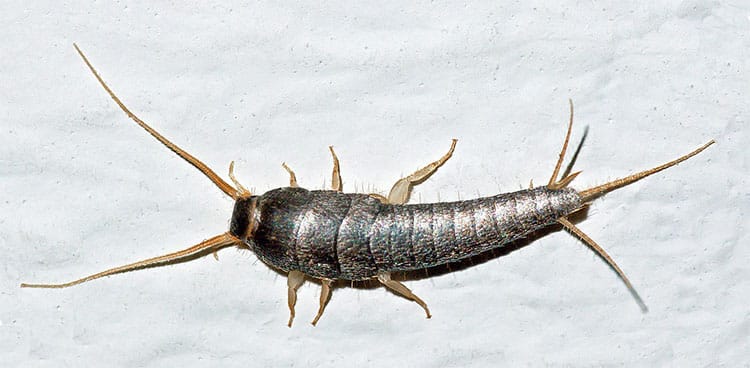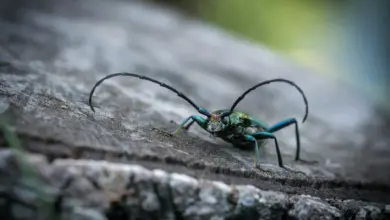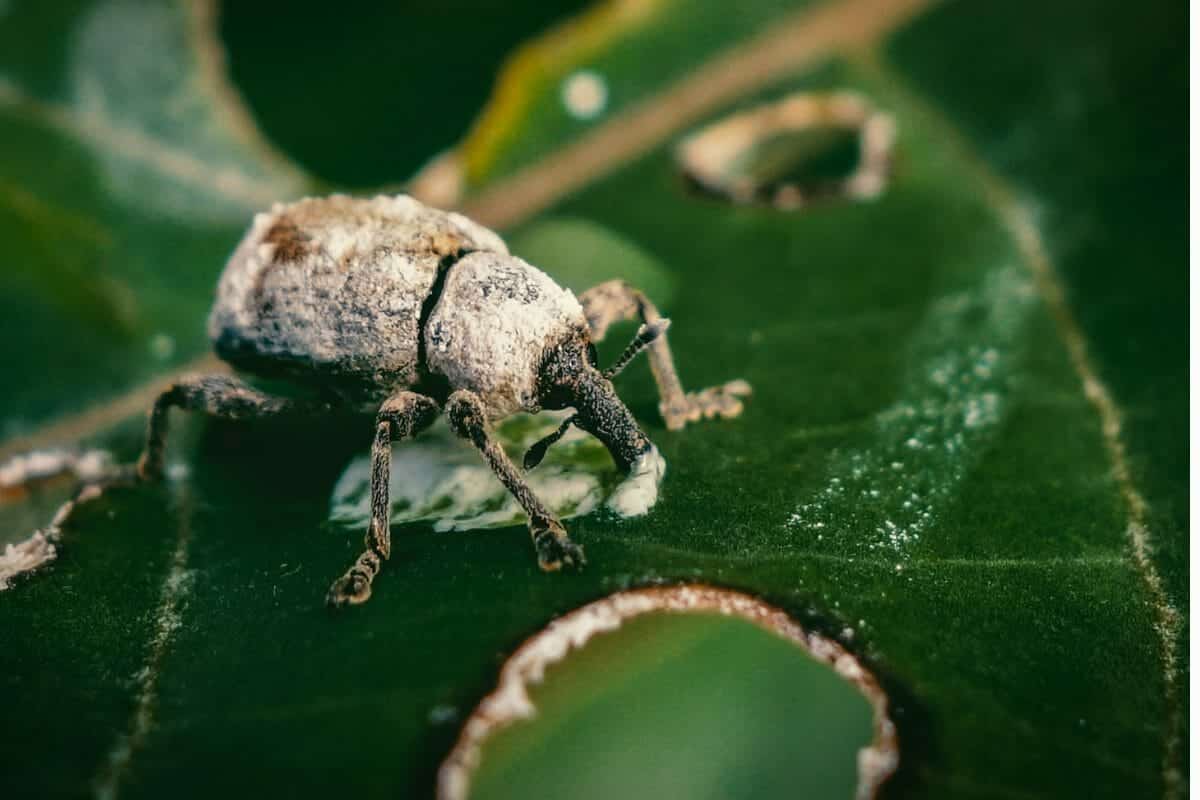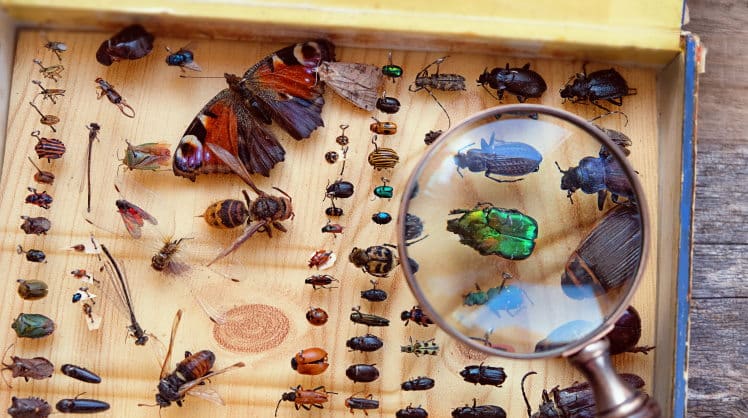Soil Ecology 101: All About The World Of The “Soil Makers”
Soil Ecology 101. The soil has been described as the “Poor Man’s Rainforest”, such is the amazing diversity and complexity of the life that exists there. This is particularly true of temperate soils.
Every step you take along a natural path, be it grassland or woodland, you have beneath your feet far more species – and immensely more individuals – than you can see around you.
The soil is not a solid indivisible block, but consists of innumerable aggregations of matter, organic and inorganic – interspersed with an equally innumerable number of small pores. Life in the soil is lived on a micro scale, and these small pores are large habitable spaces to the organisms that use them. Living in the soil is a bit like living in an endless series of interlinked caves; a huge 3D matrix of high class accommodation, with plenty of food, and very stable environmental conditions.
Like a tropical Rainforest, the temperature in the soil is fairly constant, much more so than the air above; a couple of centimetres down, the soil rarely if ever freezes – even when it is twenty below above. The humidity, which is very important to many organisms, is high and much more constant than on the surface.
The soil is not only a full time home to millions of these small animals, but is also a temporary escape from the elements for many others. Huge numbers of beetles, flies, and moths lay their eggs in the soil and have their larvae live there; as well as this, many Bees and Wasps make there nests in it. Amongst the vertebrates, many particularly Shrews, Voles, and Moles live and feed in it; Weasels and Badgers live in it and feed on the other animals which use it; Rabbits live in it; while many birds also make a living feeding on the creatures that live there.
All these burrowing mammals are important in shifting and mixing the soil; however; though often more visible; their efforts are relatively unimportant in comparison with the work done by worms.
This is particularly true of temperate soils; in some tropical soils millipedes, termites and ants are often the dominant soil movers. In some places in Britain, there are 1 ton earthworms per acre, which move well over 10 tons of soil per year.
Earthworms were described by Aristotle as ‘the intestines of the earth’. Numerous soil ecologists have been equally fascinated by the amount of work done by them. Charles Darwin said of them “It may be doubted whether there are many other animals which have played so important a part in the history of the world as these lowly organised creatures”.
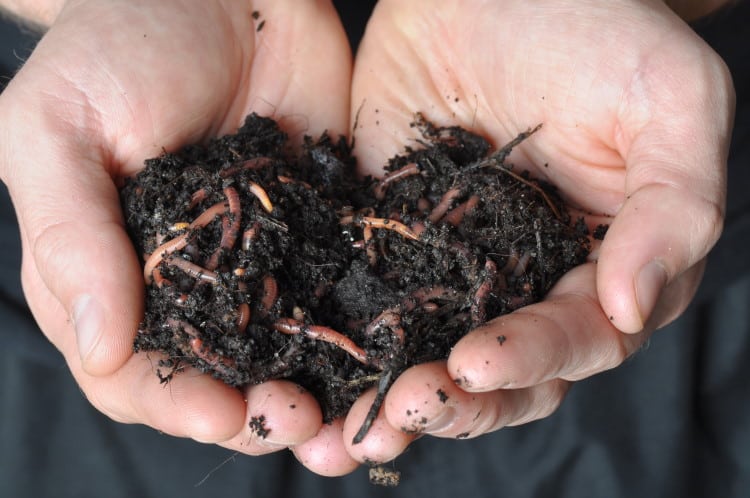
Earthworms are miniature topsoil factories. Earthworms make soil and all other living things eventually pass through an earthworm, on the way to becoming soil. Nearly every atom in your body has been in an earthworm’s stomach before it was part of you (salt is an exception). Earthworm castings are rich in all the minerals necessary for plant growth, in a water soluble form so that they are immediately available for plant use.
All the soil you have ever seen has passed through the stomachs of numerous earthworms to become what it is. Earth worms are amazingly strong, and can easily shift stones 60 times there own weight.
The best way to deal with those unwanted earthworm casts on your lawn is to collect them and use them as potting compost; no manufacturer can make anything better suited to the growth of seedlings.
Soil Ecology Facts and Figures
It takes 500 to 1000 years to produce the 1st 3cms of soil; the rate of build up is directly related to the number of earthworms present.
The Fundamental Decomposers
- Bacteria, 6 to 10 million per cm2 , or 3 500 kg per acre
- Fungi, 1 to 2 km of hyphae per cm2
Up to and more than 1000 species in a woodland. About 90% of all material produced by plants is broken down by decomposers.
Predators and Secondary Decomposers
- Protozoa feed on bacteria and fungi; 10 million per m2 or
Amoeba a million per gram of soil
Ciliates ten thousands per gram of soil
or
3 grams per m2 in grassland soils
20 grams per m2 in woodland soils - Nematodes (round worms) feed on bacteria, fungi, protozoa and plant roots
10 million per m2 in grassland soils
30 million per m2 in woodland soils
or
1 gram per m2 - Enchytraeids (pot worms) feed on dead plant material
300 000 m2 in moorland soil
200 000 m2 in grassland
or
50 and 35 grams m2 respectively - Tardigrades (water bears) 50 to 500 m2
- Pauropoda 20 to 2000 m2
- Molluscs (Slugs and Snails) feed on rotting vegetation mostly(there are a couple of carnivorous species which feed on other molluscs)
approx. 15 m2 in grassland soils
approx. 450 m2 in woodland soils - Symphyla feed on fungi,
up to 1000 m2 in grassland soils
up to 3000 m2 in woodland soils - Isopoda (Woodlice) feed on fungi, and dead plant material
500 to 1500 m2 in grassland soils
up to 3000 m2 in woodland soils - Diplopoda (Millipedes) feed on fungi, and dead plant material
approx. 20 m2 in grazed grassland
approx. 100 m2 in ungrazed grassland
100+ m2 in woodlands - Chilopoda (Centipedes) feed on insects an other soil arthropodsapprox. 120 m2 in grassland
150+ in woodlands - Aranaea (Spiders) feed on other arthropods
480 m2 in Moorlands
200 m2 in Pasteur - Acari (Mites) feed on everything are very responsive to pH,
more at pH 5 than at pH 6, and more in ‘Mor’ soils than in ‘Mul’ soils.
100 000 to 600 000 per m2 woodland soils
2 gams per m2 - Collembola (Springtails) feed on fungi and bacteria, dependent on soil moisture and pore space.
40 000 to 70 000 m2 in grassland soils
up to 500 000 m2 in coniferous woodland. - Coleoptera (Beetles) up to 2000 to 3000 per m2 in ungrazed grasslands and heathlands, levels are considerably lower in arable soils.
- Hymenoptera (Ants) live in the soil, feed on other arthropods and plants secretions, nectar etc. Important soil movers, the mound building species (wood ants) create large compost piles which often remain after the ants have gone.
1.2. Soil Organisms and Organic Manures (a literature review)
1.2.1 General Introduction
There is a considerable body of knowledge relating to the role of invertebrates in the decomposition processes which take place in grassland and other soils which has been extensively reviewed (MacFayden 1963, Wallwork 1970, Swift et al 1979, Curry 1979, Petersen and Luxton 1982 Curry 1986 and 1994 and Anderson 1988). It is generally agreed that the bulk of the work of incorporating organic matter into the soil in temperate climes is done by earthworms (Swift et al 1979 and Curry 1994), and that the actual break down of material is done by fungi and bacteria (Swift et al 1979, Petersen and Luxton 1982 and Anderson et al 1983).
Macfadyen (1963) estimated that 80-90% of the total soil metabolism arises from microbial and protozoal activity while Coleman (1985) suggests that on average 95% of the soil respiration not due to plants is attributable to soil microbial activity. Hassink et al 1992 have found that in the soils they studied the mass of soil bacteria was 9 times as great as the combined mass of fungi, protozoa and nematodes. They also found that the total number of bacteria is correlated with the total amount of pore spaces between 0.2µm and 1.2µm, similarly the total numbers of nematodes is correlated with the total amount of pore spaces between 30µm-90µm. They found no correlations between total numbers of protozoa or fungi and pore space, however a number of other workers have found that Collembola numbers are strongly effected by soil pore space (Christiansen 1967 and Butcher et al 1971).
This means that soil pore size and number plays an important role in defining the population structures and ecology of soil organisms. It does this by limiting living space, and access, of some size groups, to all or part of their potential food supplies, as well as by supplying refuges from predators for other groups or life stages. The fungi and bacteria are a food source for protozoa, nematodes, enchytraeids, and various arthropods including Acari, Isopoda, Diplopoda and a number of the Insecta (Swift et al 1979 and Curry 1994). The arthropods can be divided into micro-, meso-, and macro- groups depending on the size of the individuals involved, with micro-arthropods in grassland soil generally consisting of Acari, Coleoptera (Staphylinidae), Collembola, Diplura, Diptera larvae, Homoptera (root aphids) Protura and Symphyla.
1.2.2 Problems of Size and Diversity
The small size of the organisms involved and the impenetrability of the soil habitat makes direct observation and/or labelling of individuals very difficult, or even impossible at present and researches have been left with destructive sampling as the principle means of gaining information. The complexity of the soil as a habitat and the patchiness of the distribution of its inhabitants caused by their tendency to aggregate has continually presented problems for researchers who have attempted to delineate the specific pathways and relative importance of the various invertebrate groups. At its most extreme it has completely prevented the extraction of significant data from results Ingham et al (1986) . Most analyses of results from field experiments to date have been based on whole families or suborders being grouped together as single functional groups.
However, as is eloquently shown by the results of Lubben (1989) there is great variation of response, not only within family groupings, but also within genus. In an experiment with heavy metal contaminated sewage Isotoma notabilis showed a large increase in population numbers after sewage application whereas Isotoma productus showed a significant decrease. It will be necessary therefore to look at individual species responses and interspecies competition in order to fully understand the ecology of these soil animals. Complicating matters further, many micro-arthropods, and other soil invertebrates exhibit a flexibility of feeding which makes it difficult to attribute the static roles used in conventional food webs to the organisms concerned.
That omnivory, or feeding on more than one trophic level, exists has been stressed by MacFayden (1978) and Swift et al (1979), while Walters (1987) found that 73% of common soil animals fed at two trophic levels and 23% fed at three trophic levels, in so far as they have actually been determined. Finally when considering changes in micro-arthropod numbers through a part of a year resulting from the application of organic manures it is important to remember that the Collembola population of the soil goes through regular seasonal changes with either an annual peak in late simmer Dhillon and Gibson (1962) or biannual peaks in late spring and autumn depending on species and climate (Hale 1966).
1.2.3 The importance of Arthropods.
Though arthropods, particularly micro-arthropods, are directly responsible for a relatively small proportion of the 5% of the total soil respiration attributed to invertebrates by (Coleman 1985), their role in the processes of decomposition through indirect action as agents of comminution, propagule dispersal and as grazers of microflora, particularly fungi has been recognised in a number of general reviews and specific works (e.g. Macfadyen 1963 and 1978, Ghilarov 1969, Wallwork 1970, Reichle 1977, Swift et al 1979, Curry 1979 and 1994, Douce and Crossley 1982, Petersen and Luxton 1982, Persson 1983, Steen 1983, Seastedt and Crossley 1984, Anderson and Ineson 1984, Visser 1985 and House and Stinner 1987). Anderson and Ineson (1983) comprehensively discuss the role of micro-arthropods in N-mineralisation and immobilisation.
Mutual interactions among fauna are an important component of the system Setälä et al (1990). In an experiment involving microflora with and without micro-arthropods Seastedt (1984) found that 69% of total decomposition was a result of micro-arthropod activity. Setälä et al (1990) found that soil fauna increased significantly the levels of N and P availability, especially in the long term, as did Anderson and Ineson (1983) who found increased nitrate leaching only became noticeable after the 8th week of the experiment.
It is generally agreed that the Acari and collembola are by far the two most important groups of micro-arthropods in the soil (MacFayden 1963, Hale 1966, Wood 1966, Wallwork 1970, Swift et al 1979, Bardgett et al 1993 and Curry 1994). Seastedt (1984) states that the acari and collembola usually account for 95% of the soil arthropod fauna.
(i) Comminution
Comminution is the break down of the organic matter into smaller particles, which allows more moisture to reach the substrate and increases the surface area available for microbial attack, thus increasing the growth rate of bacteria and fungi, and accelerating the processes of decomposition. Though comminution is more the role of earthworms and macro-arthropods such as Diplopoda and Isopoda (Swift et al 1979), comminution of the substrate occurs even when the organism is grazing selectively on a fungal mat and results in the aggregation of finer particles, particularly in faeces, which promote bacterial growth over fungal growth (Visser 1985)
(ii) Dispersal of Propagules
Visser (1985) suggests that micro-arthropods may be the primary method of spore dispersal in below ground habitats, and for this reason could play an important role in the distribution of fungi and bacteria. Propagules may be either transported on the outside of the animal and brushed off at a different locality or within the animals digestive tract before being passed out with the faeces. Van der Drift (1965) and Visser (1985) have shown that both fungal and bacterial spores will develop after passing through the Collembolan digestive tract, but that the percentage germination is much reduced. For this reason it is probable that external carriage is the main method of propagule dispersion (Visser, 1985). However in many cases the main thrust of fungal dispersal and colonisation is by hyphal extension and therefore the role of spores as agents of fungal propagation may be of relatively minor importance, (Anderson pers. com.)
(iii) Grazing and Control of Fungistasis
The grazing of the microbial flora of soils by collembolans enhances N-mineralisation and therefore contributes to improved grass growth (Ineson 1982, Anderson and Ineson 1983). Sohlenius (1990) found that microbial biomass increase was not proportional to N input and suggested that this was a result of grazing by microbivores including micro-arthropods. Collembola grazing on fungal mats was found to stimulate fungal growth by van der Drift and Jansen (1977). In their work some of the fungal mycelium was beyond the reach of the grazing Collembola and was not visible to the human eye.
Consequently although no fungal growth was observed directly, some fungi continued to be active, evidence for this was found from measurements of oxygen consumption. In this way fungistasis was avoided, though it occurred in ungrazed controls, and nutrients continued to be mobilised. McBrayer et al (1974) and Tadros and Varney (1983) found that mycophagous micro-arthropods consumed up to 86% of the fungal production. However, Collembola are known to be selective feeders showing positive preferences for certain fungal species over others in laboratory experiments (Shaw 1988) as well as for particular nutrient regimes (Booth and Anderson 1979, Leonard 1984). In nature it is unlikely that they will have only one fungal species to feed on, and as some fungal species appear to be rejected by collembola it is probable that under natural conditions a smaller percentage than this will actually be consumed by them.
Seastedt (1984) reports that micro-arthropod grazing activities change the composition of the fungal community, and Parkinson et al (1979) showed that a successional change can occur in fungal communities as a result of Collembolan feeding. Newell (1984a and 1984b) showed that Onychiurus latus grazed preferentially on Marasmius androscaeus rather than Mycena galopus, and that in doing so it gave M. galopus a competitive advantage. Grazing of micro-arthropods on fungal colonies can change dominance structures between fungi and bacteria as well, (Hanlon and Anderson, 1979) with the bacteria gaining dominance as a result of micro-arthropod grazing. The image is complicated by the fact that grazing can be stimulatory at low levels, but becomes depressive at higher levels (Hanlon and Anderson, 1979 and Visser 1985).
Hanlon (1981) showed that the responses of fungi to collembola grazing can be affected by the nutrient regime of the fungi, with fungi on a low nutrient regime being depressed by grazing while, fungi on a high nutrient regime are stimulated by the same grazing pressures. Collembola prefer, and have a higher growth rate and fecundity on high quality mycelia from fungi grown on high nutrient substrate over the same fungi grown on low nutrient substrate and thus being of low quality (Booth and Anderson 1979, Leonard 1984). It would be expected therefore that Collembola would respond favourably to new fungal growth generated by the application of organic manures. In summary Anderson (1988) wrote that mite and Collembola grazing on fungi has diverse effects depending on a number of variables including the nature of the soil, the density of the micro-arthropods and the individual species involved and can result in dominance changes within the microbial community.
1.3. Slurry
1.3.1 Its Spreading and General effects
Most of the work done on nitrogen fluxes in grasslands relevant to organic manures has been empirical or process based. It is now known that the method of slurry application affects its incorporation into the soil and subsequent usage by the grass. Sørensen and Jensen (1995) found that method of application and soil type combined to influence mineralisation rate, but that in general immobilisation of slurry-N occurred within one week of spreading. Øyen et al (1995) found that a high dilution rate and band spreading produced the best N usage, while Ress et al (1993) found lower crop yields for first cut silage for slurry injection when compared with surface spreading for both 1987 and 1988.
However their results differed between years for 2nd and 3rd cuts with injection showing lower yields in 1987 but higher in 1988; they found no significant differences between different surface spreading techniques or between deep and shallow injection. Environmental factors, for example soil moisture content, could be important in the interpretation of these results. Peterson (1992) found an increase in moisture around injection slits and suggested that this was a result of the particulate matter in the soil helping to increase the water retention rate.
Smith et al (1995) investigated the negative effects of spreading cattle slurry on grassland and found that winter and early spring applications could reduce grass growth by up to 20%, and first silage cut yields by up to 5%, mainly as a result of smothering and scorching, if the recommended application rates of 250 kg ha-1 organic-N were exceeded.
1.3.2 Slurry and Micro-organisms
That the incorporation of organic fertilisers into the soil promotes microbial growth is well known (Kandeler and Eder 1993), but the increase is not linear across all microbial species. Acea and Carballas (1988) found that though the specific dynamics of the increases are dependent on the microbial composition of the slurry, the soil, and the method of application, there is a definite sequence of microbial types. Anaerobic cellulolytics and amylolytics show an initial rapid increase followed by equally rapid decline, after which aerobic cellulolytic and pectinolytic species come to dominate, showing a long term increase in density. Pokarzherskij (1989) reports that it is these cellulolytic micro-organisms which are mainly utilised by soil animals.
Therefore the application of slurry and FYM to grassland soils would be expected to result in a long term build up of the microbial agents preferred by Collembola and other micro-arthropods as a food source. currently it is not known whether changes in soil micro-arthropod numbers after application of slurry to grassland soils is primarily a response to changes in the soil microfauna. Another confounding factor is that slurry contains a large number of microbial agents which it brings to the soil with it, Acea and Carballas (1988) suggest that the increase in soil micro-organisms observed after slurry application is a result of this imported microbial fraction rather than a response of the existing species to the input of nutrients.
1.3.3 Slurry and Collembola
Curry (1979) recorded 144 species of arthropods from cow dung in temperate grassland, and the successional colonisation and decomposition of cowpats is relatively well understood. However many of the organisms involved in the conventional cow dung community are responding to a relatively large and discrete resource which is very different to the resource represented by slurry, and to a certain extent broadcast FYM. The responses of Collembola to the addition of organic manures to grassland soils are varied. Curry (1994) reports considerable and consistent reductions in Collembola numbers subsequent to both cattle slurry and pig slurry applications between April and August. He was only recording epidaphic species collected in a suction sampler however, and it is possible that these may have suffered from smothering and scorching.
Most workers have studied the effects slurry spreading on hemi- and eudaphic species, Edwards and Lofty (1969) and King and Hutchinson (1980) found that Collembola numbers in grassland increase as a result of fertiliser application. However, Siepal and van de Bund (1988) found they had their lowest abundance of Collembola at their highest fertiliser rate, though not all species responded to the fertiliser in the same manner with some species being more abundant at the higher application rates.
Zettel and Klingler (1983) demonstrated considerable changes in Collembolan population structures subsequent to sewage and pig-slurry applications. Total numbers of Collembola increased with both treatments, and the increase was greater with pig-slurry. However, when the data are divided into family groups there were distinct differences in responses between families with most of the increase being accounted for by the Poduridae while several of the other families showed significant decreases for both treatments.
Further to this Lubben (1989) found sewage, even when contaminated with heavy metals, increased total Collembola numbers when spread on agricultural land. He also noted that the increase was not universal, but that some families increased considerably while others decreased. even within one genus there was great diversity of response. for example Isotoma nobilis which is known to have a liking for high levels of organic material (Plergarten 1985, in Lubben 1989) increased dramatically while Isotoma productus had significantly reduced numbers in all sewage treatments.
Alternatively, Bardgett et al (1993) found a decrease in soil micro-arthropods especially Collembola with a decrease in sheep grazing pressure. In a study on upland grassland, he found as many as 5 times more micro-arthropods in highly grazed plots compared to ungrazed plots, and this coincided with an increase in fungal hyphal length, showing that the decrease was not a result of a loss of fungal food source. He suggested that water logging of the soils due to a higher input of organic matter from the grass may have been partially responsible. This may well be so as it is well known that a high water content in loam soils reduces Collembola numbers though it has the opposite effect in sandy soils (Verhoef 1977 and Filser 1995). This may also partly explain the fact that Andrew and Lagerlof (1983) found that FYM had more effect on micro-arthropod numbers when applied to sandy soils than when applied to clay based ones.
Further to this King and Hutchinson (1976) in a study of temperate grassland in Australia found that micro-arthropod numbers were positively correlated with increased stocking rates. The varying results of these studies serves to emphasise the dynamic nature of the soil environment and the importance of taking into account abiotic factors when interpreting results of faunal studies. Filser (1994) states that water content and soil bulk density are important factors in determining Collembola population structures, and infers from the microbial figures of Winter and Beese (1995) that microbial biomass is not an important factor in determining the abundance of Collembola, however this is subject to error as Winter and Beese only sampled each field once a year.
Contrarily, Warnock et al (1982) and Finlay (1985) report that Collembola grazing on the external mycelium of versicular-arbuscular mycorrhizal fungi (VAM) show increased growth rate over those without VAM to feed on and that in feeding on the VAM they may reduce plant growth by reducing the nutrient uptake of the plant.
References
For soil ecology references, please check the bibliography.

